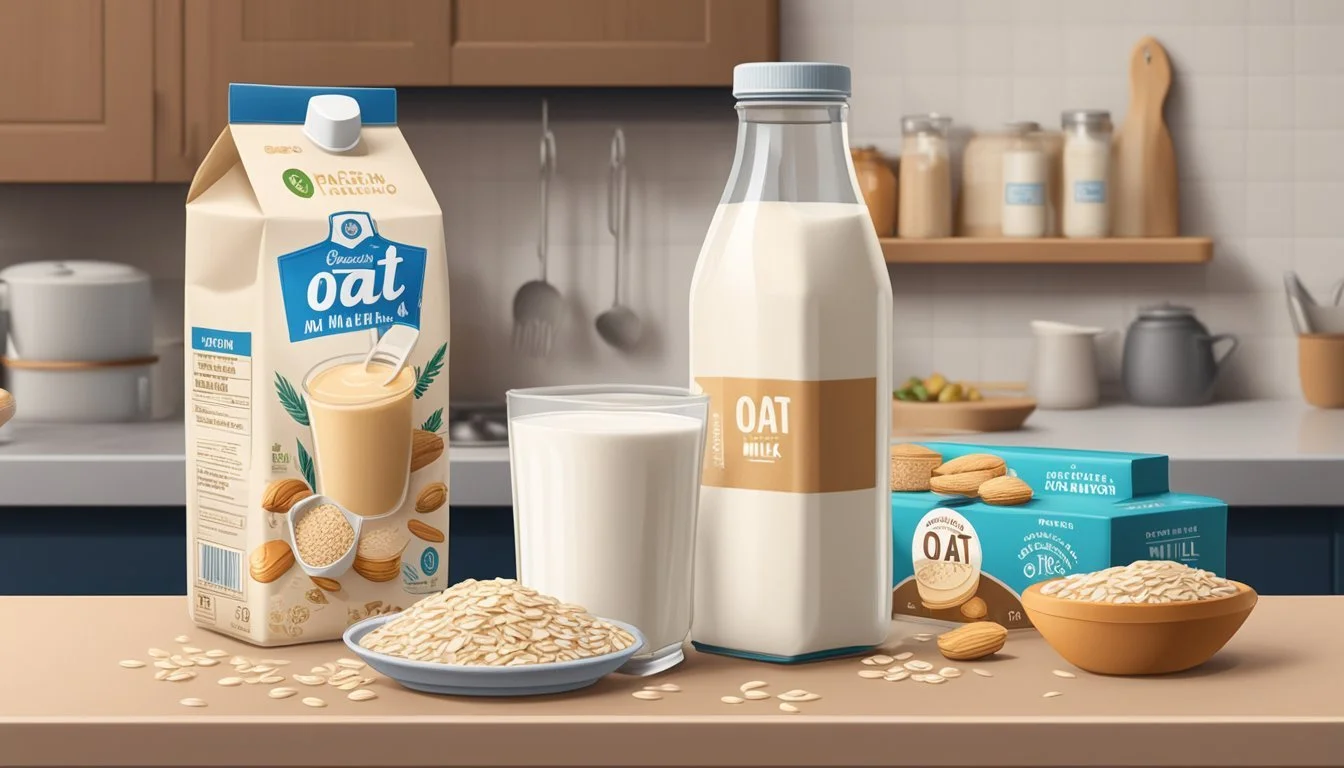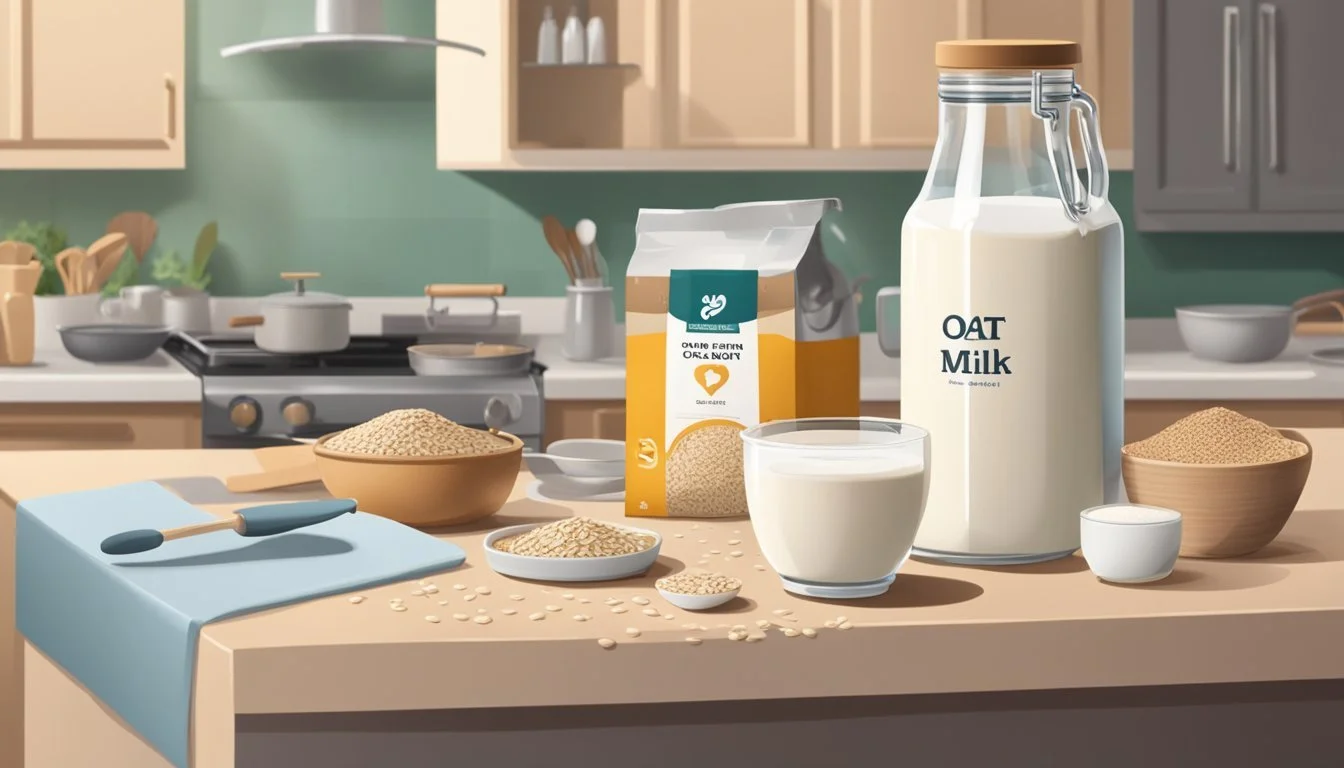Does Oat Milk Go Bad?
Understanding Shelf Life and Storage
Oat milk, a popular dairy-free and plant-based milk, has gained traction for its creamy texture and numerous health benefits. As with all beverages, it's crucial to know whether it can spoil and how to identify signs of spoilage. The question remains: does oat milk go bad?
Yes, oat milk does go bad. Its shelf life varies depending on whether it's shelf-stable or refrigerated. Once opened, oat milk should be consumed within a week for optimal freshness. Signs of spoiled oat milk include an unusual smell, off texture, and changes in taste.
To keep your oat milk as fresh as possible, refrigerate it immediately after opening. Discoloration or mold growth are clear indicators that it’s time to discard the product. By understanding these signs, you can ensure that your plant-based milk remains a healthy and enjoyable addition to your diet.
Understanding Oat Milk
Oat milk stands out among plant-based milk varieties due to its composition and beneficial nutritional profile. Unlike almond milk or other alternatives, oat milk offers unique health benefits.
Composition and Nutritional Value
Oat milk is primarily made by blending oats with water and then straining the mixture to remove solid particles. It often contains added vitamins and minerals to boost its nutritional value.
Each serving of oat milk typically includes fibers that promote digestive health, as well as a moderate amount of protein. It is relatively low in calories compared to whole milk. Fortified oat milk provides essential nutrients such as vitamin D, vitamin B12, and calcium, which are important for bone health and energy production.
Due to its rich nutrient profile, oat milk is a preferred choice for those looking for a balanced plant-based milk alternative.
Plant-Based Milk Varieties
Among plant-based milks, oat milk is popular for its creamy texture and neutral taste. Other common plant-based milks include almond milk, soy milk, and coconut milk.
Almond milk is low in calories and has a subtle nutty flavor, making it suitable for those on a calorie-restricted diet. Soy milk offers the highest protein content among plant-based milks and is often chosen for its nutritional benefits. Coconut milk, with its unique tropical flavor, is higher in fat but provides a different taste experience.
Each type of plant-based milk, including oat milk, caters to different dietary needs such as vegan diets, lactose intolerance, and celiac disease, ensuring a suitable option for various health considerations.
Shelf Life and Expiration
The shelf life of oat milk varies significantly based on whether it is opened or unopened and whether it is shelf-stable or refrigerated. Proper storage is crucial in extending its freshness and ensuring safety.
Unopened Oat Milk
Unopened oat milk can be shelf-stable or refrigerated. Shelf-stable oat milk typically has a longer shelf life, often up to 6-12 months, and can be stored in a pantry. Always check the "best by" or "use by" date on the package for exact timing.
Refrigerated oat milk has a shorter shelf life and should always be kept in the fridge. It usually lasts for a few weeks unopened. Adhering to the printed expiration date will help avoid ingesting spoiled milk.
Opened Oat Milk
Once opened, oat milk's shelf life reduces significantly. Both shelf-stable and refrigerated oat milk should be consumed within 7-10 days after opening, regardless of the original storage instructions. Store it in the refrigerator to maintain freshness.
Warning signs of spoiled milk include a sour smell, clumpy texture, and discoloration. If any of these signs are present, the milk should be discarded immediately.
Key Tips:
Store opened oat milk in the fridge.
Use it within 7-10 days.
Check for spoilage signs before consumption.
Signs of Spoilage
When oat milk goes bad, it provides several noticeable signs that indicate spoilage. The two primary ways to determine if oat milk is no longer safe to consume are through visual inspection and checking its odor and taste.
Visual Inspection
Fresh oat milk typically has a smooth and creamy texture with a light brown or cream color. Discoloration is a major red flag. If the milk appears yellowish or any different color, this could mean the presence of mold or bacterial growth. Clumping or a separated appearance can also be indicators that the product has gone bad.
Detecting mold growth is another visual cue. Though it takes longer for mold to appear in liquid, any signs of mold mean the oat milk should be discarded immediately. Check the packaging for any bulging or leaks, which could signal that the oat milk has been compromised and could spoil faster.
Odor and Taste
Oat milk that has gone bad will often have a sour or rancid smell. A fresh container should smell neutral or slightly sweet. Any deviation from this, especially a sour, musty, or foul odor, suggests spoilage due to bacterial contamination.
Tasting a small amount can confirm spoilage. If the milk tastes sour, bitter, or unusually off, it should not be consumed. Even if the odor seems acceptable, a spoiled taste is a clear sign that the oat milk is no longer good. Spoiled oat milk may also feel slimy or unusually thick, indicating it has expired.
By keeping an eye out for these signs, it is easier to prevent consuming oat milk that may cause digestive issues or other health problems.
Proper Storage Practices
Proper storage of oat milk is essential to maintain its freshness and ensure it remains safe for consumption. Key considerations include managing the temperature and environment of storage and using proper containers and seals to prevent spoilage.
Temperature and Environment
Oat milk's freshness depends heavily on storage conditions. Refrigerated oat milk should be kept at a temperature of 1-4°C (34-39°F). This environment helps slow down bacterial growth and extend the milk's shelf life.
Shelf-stable oat milk, typically found in cartons, can be stored at room temperature until opened. Once opened, both types should be stored in the refrigerator. Exposure to air and fluctuating temperatures can speed up spoilage. Ensure your refrigerator is consistently cool to keep the oat milk fresh.
Containers and Seal
Using the right containers is crucial. Airtight containers or original sealed cartons help prevent the oat milk from absorbing odors from surrounding foods. Proper seals maintain the quality and minimize exposure to contaminants.
Homemade oat milk should be stored in airtight containers to keep it fresh. Regularly check the container for any cracks or damages that could compromise the seal. Proper sealing also prevents unwanted bacteria and mold growth, ensuring the milk stays safe to drink.
Consuming Oat Milk Safely
Ensuring the safe consumption of oat milk involves paying attention to the expiration date and proper storage after opening. These factors significantly impact its freshness, taste, and potential health risks.
Before the Expiration Date
Unopened oat milk, whether refrigerated or shelf-stable, has a printed expiration date which indicates the period within which it is safe to drink. For shelf-stable oat milk, this period can range from six to twelve months. Refrigerated varieties generally last for a shorter time, typically a few weeks.
It is crucial to store unopened oat milk in a cool, dry place away from direct sunlight. Check for signs of damage to the packaging. Bloating or swelling can indicate spoilage even before the expiration date. Sensory cues like sour smell or off-putting colors, once opened, are red flags that the milk may have gone bad.
After Opening
Once opened, oat milk should be stored in the refrigerator to maintain its freshness and safety. Ideally, it should be consumed within 7 to 10 days. Shaking the container before each use helps maintain its consistency.
Be alert to signs of spoilage such as separation of liquid or mold growth. Oat milk that has developed a sour taste or unpleasant odor should be discarded immediately. Consuming spoiled oat milk can lead to food poisoning and associated health issues.
Always use clean utensils to pour and avoid drinking directly from the carton to minimize contamination risks. Proper storage and handling help ensure that oat milk remains safe to drink and fresh for a longer duration.
Alternative Uses for Oat Milk
Oat milk can serve various functions in the kitchen and as a non-dairy substitute, making it a versatile addition for those seeking alternatives to traditional dairy products. It offers both culinary advantages and practical applications for those with dietary restrictions.
Culinary Applications
Oat milk's creamy texture and natural sweetness make it ideal for numerous recipes. Smoothies benefit from its silky consistency, adding a pleasant richness without overpowering the flavor profile. It's also excellent for lattes, providing a smooth, frothy finish that pairs well with coffee.
For those who enjoy baking, oat milk can replace dairy milk in cakes, muffins, and pancakes. Its carbohydrate content helps achieve a tender crumb, while the natural sweetness complements desserts. When making overnight oats, oat milk enhances the creamy texture while adding nutritional benefits like fiber.
Non-Dairy Substitute
Oat milk is a valuable option for those with allergen sensitivities or lactose intolerance. It offers a plant-based milk alternative that is relatively free of common allergens like nuts and soy. Families adopting a dairy-free diet can use oat milk in cereals, sauces, and soups.
As a substitute in cooking, oat milk works well in savory dishes. Its mild flavor ensures it does not overpower recipes, making it suitable for creamy soups and pasta sauces. Additionally, oat milk's higher carbohydrate content can provide an energy boost, making it a practical choice for active individuals.




